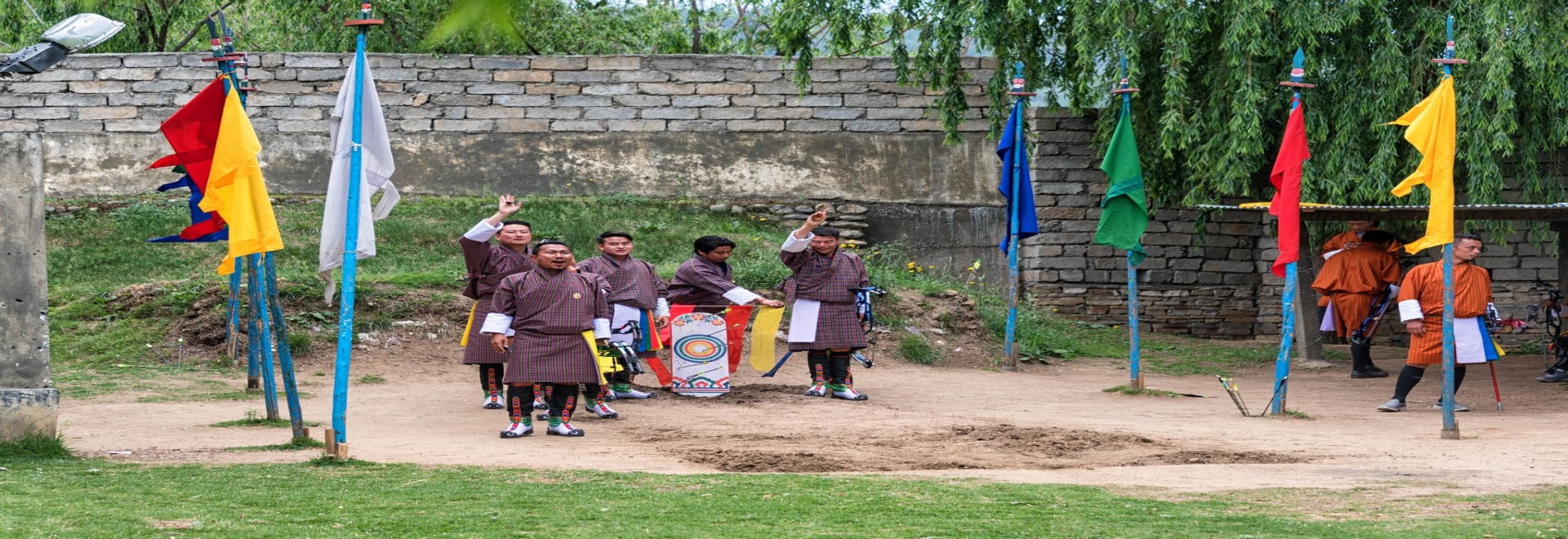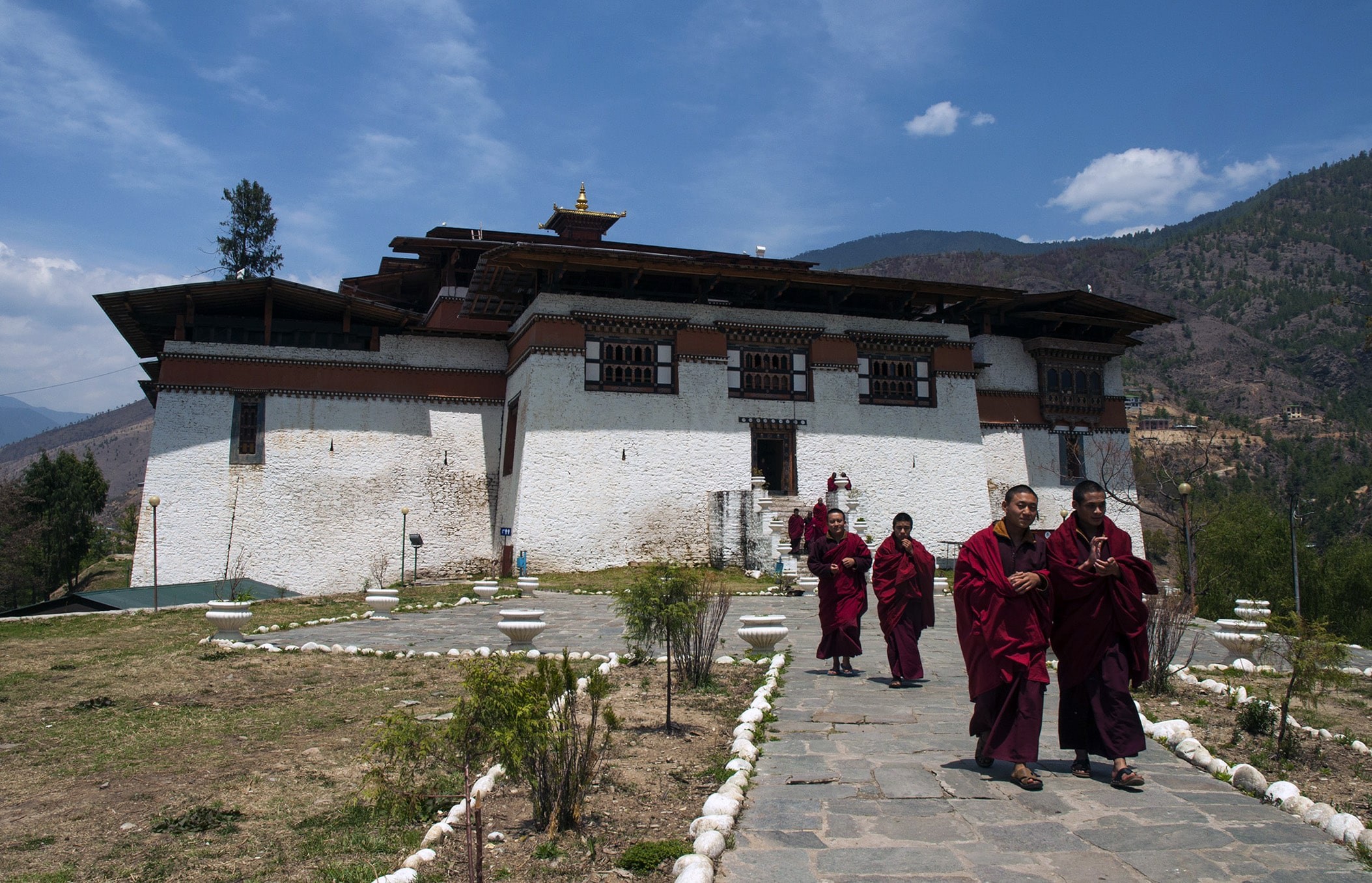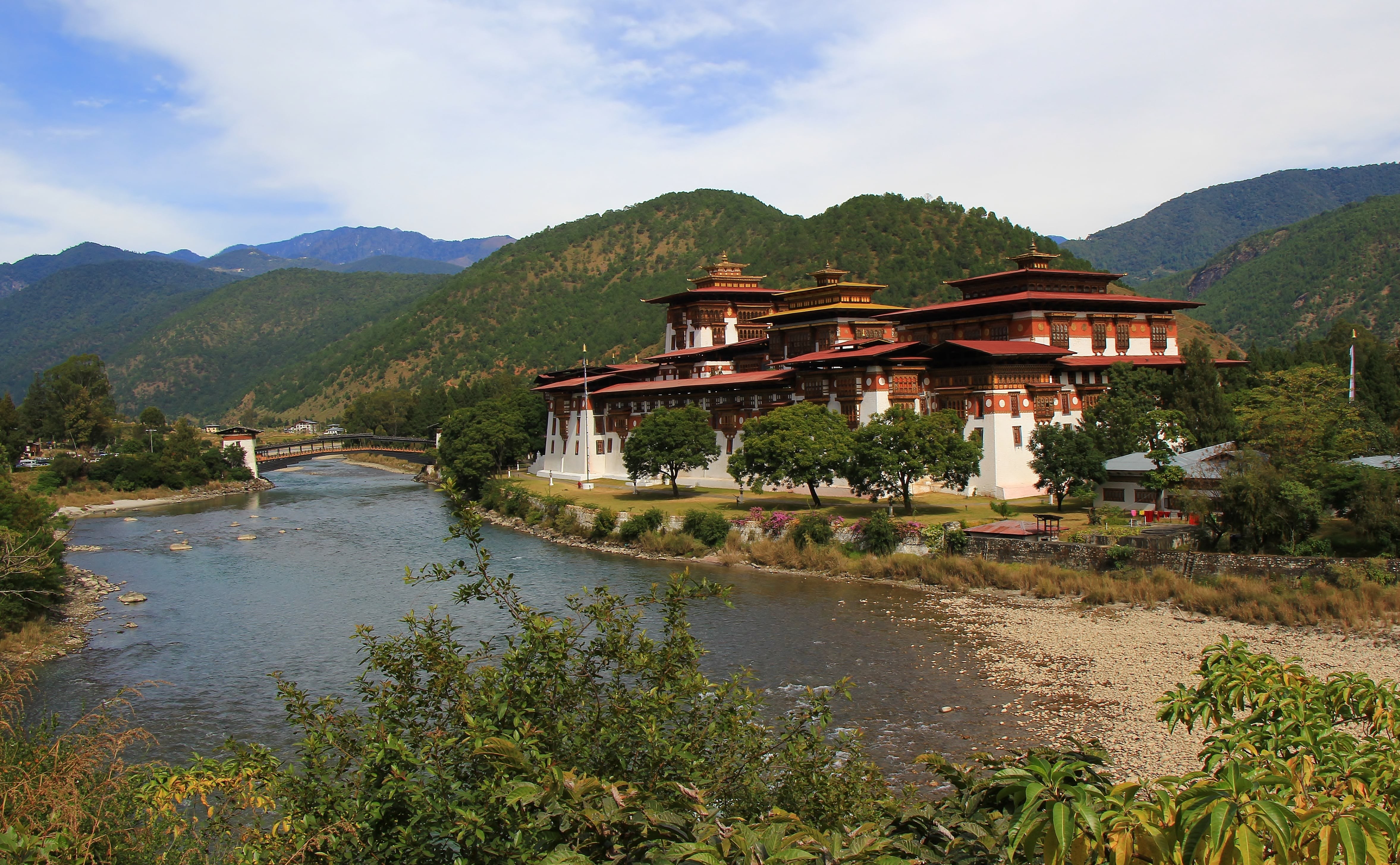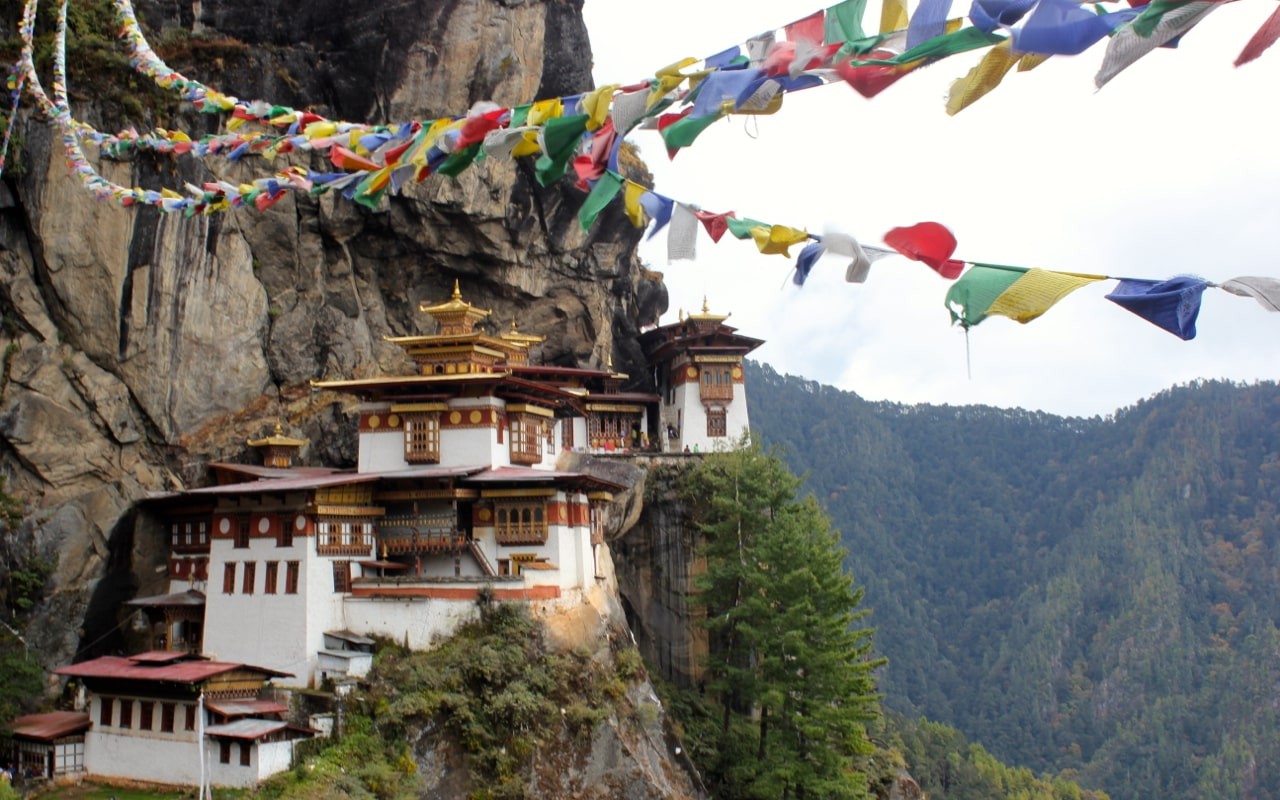
Bhutan As One Of The Safest Travel Destinations

Bhutan As One Of The Safest Travel Destinations
Maria Nowacka
4447
20, 07 2020
Bhutan - one of the most mysterious and unique places in the world. Nowadays, it is also considered as one of the safest travel destinations in the year 2022/23. Secret valleys, Himalaya mountains, vibrant cultural heritage, the hospitality of Bhutanese all of these highly protected by the government to keep them untouched by tourism footprints. The protection has also its price, not low price. Visiting Bhutan is not ranked as a cheap holiday; however, it definitely is an unforgettable and one-in-lifetime experience.
WHY IS BHUTAN A SAFE DESTINATION?
Even in non-pandemic times, Bhutan has very strict rules of travelling inside the country. All the trips and holidays have to be booked through a travel agency and with a guide. Bhutanese government ensures tourism does not destroy the country's cultural heritage. The royal government of Bhutan strongly advocates HIGH VALUE, LOW IMPACT tourism. There is a specific fee for a day that includes a guide, transportation, entrance fees, accommodations and often also meals. The way tours in Bhutan are organised, definitely add extra points to safety during the holiday.
SHORT GUIDE ON HOW TO TRAVEL TO/IN BHUTAN
Bhutan is a distinctive destination, so the choice of flights and cities of departure is rather limited. The international airport of Bhutan is located in Paro. This airport has challenging conditions to land and take-offs, and only number of pilots have a license to do it! Popular Asian cities that connect Europe with Bhutan are Bangkok, Kathmandu, Delhi, and Singapore. Longer stopover gives an opportunity to quickly explore these places before landing in Bhutan.
There are also options for combined tours, as Nepal-Bhutan holiday. It offers 2 weeks of exploring famous Nepalese and Bhutanese places, including trekking, a flight from Kathmandu to Paro, accommodation, and meals.
While traveling inside Bhutan, all tours are organized by travel agencies, so travelers don’t need to bother about anything. It is still advisable to buy travel insurance in case of unexpected accidents.
Regarding visa, an agent with whom the trip is booked will organize it. The fee is either included or has to be paid extra, around 50$. Double-check with your travel agency while booking the tour.
PLACES TO VISIT
Bhutan is not a big country but has many places that are enchant with their beauty and unique tradition. Have a look at a few suggestions:
Thimphu
The capital of the Kingdom of Bhutan since 1961. Thimphu is a stunning city located in the valley along the banks of the Wang Chhu river. Except for beautiful nature and surrounding views, the city offers several interesting places to visit. Buddhist monastery Trashi Chho Dzong, a couple of Buddhist temples, the National Textile Museum, and Weekend Thimphu Market in Chhogyel Lam are only few attractions worth to see.
Paro
Landing in Paro, the only city in Bhutan with an international airport, gives an extraordinary opportunity to explore this place in-depth. Wandering along small historical streets, watching the everyday activities of local people, and visiting monuments and temples will perfectly begin the adventure into the Kingdom of Bhutan and its traditions. Paro Taktsang, Tiger's Nest monastery, is a must-see place.

Punakha
The first capital of Bhutan before Thimphu. An ancient city with a rich history and cultural heritage, located in the valley between two rivers, Pho and Mo. It is worth visiting to discover Bhutanese history and culture and to admire stunning views of the Himalayan mountains, spreading around the city.
Jigme Dorji National Park
This undisturbed, wild, beautiful area of fauna and flora was established in 1974 as a national park to protect the indigenous species of endangered animals in Bhutan. Jigme Dorji Park is a habitat for most unique species such as the snow leopard, Bengal tiger, the clouded leopard, the Himalayan black bear and the famous Bhutanese Takin. The area of the park spread from 1000 to 7000m high and it's an ideal place for nature lovers and wildlife enthusiasts.
Mt Jomolhari
Mt Jumolhari or Chomolhari is 7,326m mountain located between Bhutan and Tibet. Known as the ‘bride of Kanchenjunga’, Bhutanese Buddhists believe it to be the home of one of the Five Tsheringma Sisters, the female protector goddesses of Bhutan and Tibet, who were bound by Padmasambhava to protect the people, the lands, and the Buddhist faith from evil demons. Jomolhari is not an only popular destination for trekkers, but also pilgrims as at 4,150m high lie the Jomolhari Temple. From temple, it takes only one hour walk to Bhutan's highest lake, the Tseringma Lhatso.
Bumthang (Owl trek)
Owl trek is a short 3-4 days trek that passes through authentic Bhutanese villages inhabited by nomadic groups, Khep and Brokpa. Its rather easy trail, at lower and medium altitudes, provides an unforgettable experience of walking in the forests full of rhododendrons, blue pines, birches, junipers, bamboos and of course owls! Exploring the hills of Bumthang is a perfect choice for people who don’t have time for a longer trek or those who don’t want to do a more strenuous trek.

HOW MUCH TIME TO SPEND IN BHUTAN
The best option to deeply explore Bhutan will be at least a month holiday. However, this may be very costly at the end. To discover the most known places and feel a bit the vibes of Bhutanese life at least one week is needed, preferably two weeks. Three weeks will give enough time to slowly engage in history and traditions plus choose one of the fantastic treks and spend some time in nature. The best seasons to visit Bhutan are October to December and March till April. January and February are still good, but a bit colder, so make sure to take warmer clothes.
ALL ABOUT THE MONEY
Here we will touch the most sensitive point of a holiday in Bhutan - the wallets.
Vacation in Bhutan does not fall into the box of cheap trips. The reason behind it is that all activities, taxes, entrances fees, transportation, documents are organised for travellers and of course this cost money. The fee depends on the agency and of course the selection of activities chosen. It may range from 220$ to 300$ per person per day, also depending on joint or solo travelers. Prices may be lower in off-season months. The prices are strictly regulated by government policies and regulations, so they will not differ hugely depending on what tour company is chosen.
Tipping in Bhutan is not compulsory but is seen as a kind gesture and an appreciation for the service. Tour and trekking guides, driver, taxi drivers or hotel staff will for sure appreciate little pocket money.
As in most Asian countries bargaining is widely accepted, in Bhutan, most shops and sellers have fixed prices. However, while visiting local markets, as eg Weekend Market in Thimphu, bargaining skills can be used.
Bhutanese currency is called Ngultrum. 1 dollar is around 75 Ngultrums. ATMs and exchange shops are widely available in the country, accepting the most common worldwide currencies, including Dollars and Euros.

IS IT WORTH TO VISIT BHUTAN?
If you are ready to pay a bit more money, the Kingdom of Bhutan is, beyond question, a place to go. It’s one of the few destinations in the world that protects its heritage against the effects of tourism footprints. Moreover, environmental awareness is set up as a priority. There are few interesting facts from Bhutanese policies regarding ecology:
* Bhutan is the only country in the world with negative carbon statistics. It means Bhutanese reduce more carbon than they create!
* National policies state that minimum if 70% of the country must be kept as the forest. According to the 2017 statistics Bhutan has 71% of the country under forest cover.
* In most of the districts of Bhutan selling cigarettes and tobacco products is banned. Also smoking in public places is forbidden ( tourists are allowed to bring in 200 pieces of cigarettes from abroad)
The Kingdom of Bhutan provides travelers with those things, not only now, but since many years of tourism. At the same time, the country has developed a model strategy to protect its inheritance along with accessing its beauty to tourists' eyes.
NEWSLETTER SIGNUP
Sign up to receive our trip ideas and travel offers!
Get updates and Exclusive Offers up to 20% Discount








